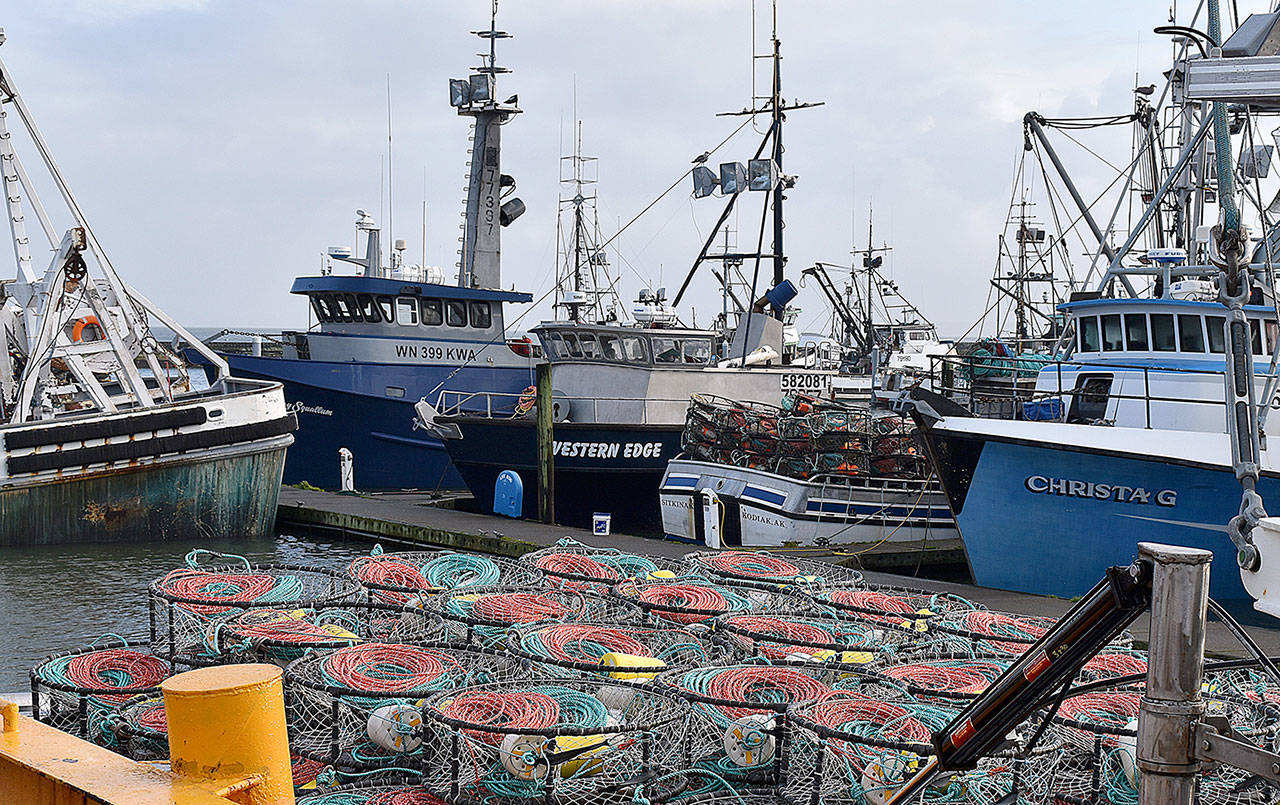Shellfish producers and crab processors who rely on trade with China are feeling the impacts of the coronavirus.
Commercial crabbers missed out on lucrative live crab exports to China the entire first month of the 2020 season, and oyster growers have seen significant drops in orders.
“My company is about 70% export,” said Ken Wiegardt of Wiegardt Brothers Inc., an oyster producer in Nahcotta that operates under the trade name Jolly Roger. The virus “has certainly taken a big chunk” out of his orders this year, he said.
China is not accepting shipments of live food, including shellfish and crab.
“After the news of the outbreak in China at the beginning of February my orders were down so far I was looking at layoffs and having to take some drastic measures,” said Wiegardt. “At one point we were down to about 15-20%, where I started to get really worried.”
Wiegardt, a fifth-generation oysterman, said, “It’s picked up a little bit” in recent weeks, but still only about 50% of what is typical for this time of year.
The company employs about 48 people and produces roughly 85,000 gallons of shucked oysters annually. The thought of layoffs is particularly hard for Wiegardt.
“It’s been really tough on me because I have a lot of employees who have worked for me for 10, 20, 30 years,” he said. “My longest-tenured shucker has been here since ‘92, which is when I graduated high school. To let those people go” would be difficult at best. So far Wiegardt has been able to avoid layoffs.
Wiegardt said he only exports to Canada and Hong Kong, “not directly to China,” which puts him in a little bit better shape than other companies that rely on direct trade with China. “I know a couple of other companies that are really hurting,” he said.
“Now I’ve got to wonder what is going to happen with the domestic market now that we see a bit of a scare here,” he said. “It’s only 30% of my market, but if both that and my exports fall below 50% I’m going to have to look into doing some layoffs.”
Another impact on his business has been with packaging. Right now Wiegardt has a big order of the glass jars used to pack shucked oysters sitting on a dock somewhere in China, with no timeline given as to when they might make the journey.
“I’m sure they’re not a high priority on the list,” he said.
Brady’s Oysters co-owner Kristi Ballo said, “We just had a really busy weekend with the clam tides, and I think people are trying to get out of Seattle.”
She said Brady’s hasn’t reached a point of layoffs like some of the bigger producers have – a recent Seattle Times report said Shelton-based Taylor Shellfish has laid off 40 of its 700 workers – but is concerned the spread of the virus could impact business from the tourists that drop by during the peak of the tourist season.
“We’re not there yet,” she said of possible layoffs, “But I imagine as this gets bigger and more people are impacted it will start to trickle down.”
Willapa-Grays Harbor Oyster Growers Association president David Beugli said recent conversations with producers show orders are down some, but layoffs have not yet occurred among local operations.
“No layoffs here yet,” he said.
Dungeness crab
The complete lack of live crab exports to China has hampered the 2020 season, but domestic markets have helped pick up the slack, at least for Westport Seafood.
“Right at the start of the crab season there was a definite shutdown in the China economy, so there were no live crab sales to China, which hurt the price for the boats,” said Mike Cornman. “We have a fairly strong domestic market, They usually take up the slack of what doesn’t go to China so that was good, they were there for us and were able to take the product.”
Westport Seafood paid a record price for crab cooked and sold domestically, which was good for the company. However, the fishermen will tell you the price was down because of the absence of the Chinese market.
“There were zero shipments of live crab to China the first month of the season,” said Cornman, who hesitated to place blame for that on the coronavirus alone.
Cornman said the abundance of crab was down this season, not entirely unexpected as populations are cyclical.
“Crab have a 12-year cycle,” he said. “It will be on the upswing for six years, then peak out, then take five or six years to sink to the bottom, then five or six years to come back. This was just one of the down years.”
Because Westport Seafood is one of the smaller shippers in town, it can rely on domestic buyers to move its product. Larger volume operations that rely more heavily on exports to the China market are more likely to feel the bigger impacts.
The commercial Dungeness season continues through the summer, though 90 percent of the annual catch comes during the first month or so of the season, said Cornman. While most of the commercial boats have ended their season, local crabbers will continue to fish and eke out enough to provide to local markets.
Port of Grays Harbor
The Port of Grays Harbor has yet to see any negative impacts from the virus.
“The Port of Grays Harbor has not been impacted by coronavirus as of this time,” said Leonard Barnes, deputy executive director. “Shipping and other activities have been going on as normal.”
And it’s business as usual at Pasha Automotive Services at the Port’s Terminal 4.
“Pasha Automotive Services and Pasha Stevedoring and Terminals services at the Port of Grays Harbor are operating normally,” said general manager Penny Eubanks.


